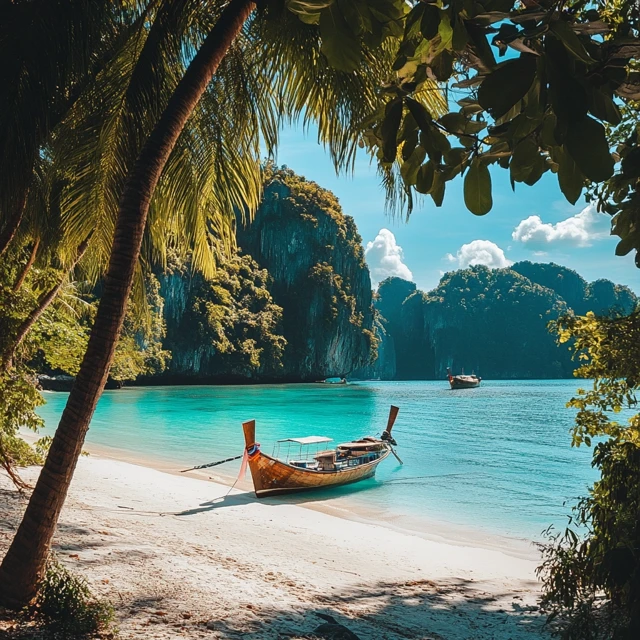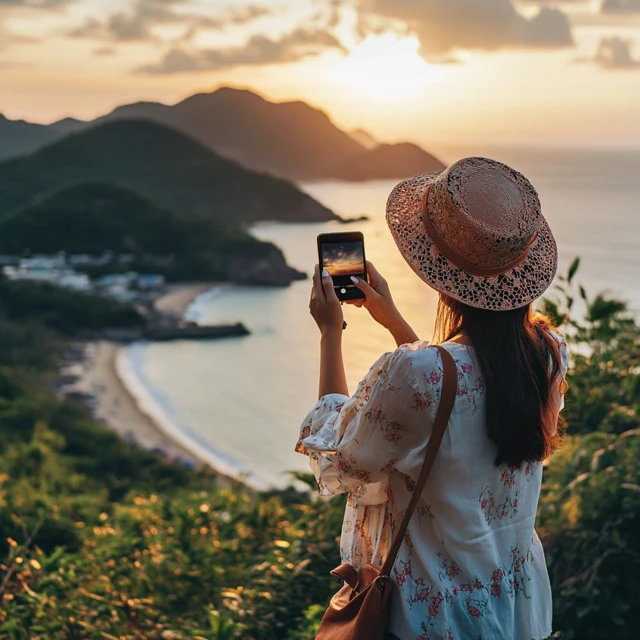Introduction: Cherishing Your Travel Moments
Travel photos serve as visual diaries of our adventures—tiny glimpses of new cultures, stunning
landscapes, and memorable experiences. While professional gear can help, you don't need an expensive
camera to capture breathtaking images. With a bit of knowledge, creativity, and a smartphone or a
modest point-and-shoot, you can produce gallery-worthy shots anywhere you roam.
This comprehensive guide covers essential techniques: from composition and lighting to phone camera
hacks, quick editing, and more. Let's dive into photography tips that'll elevate your travel snapshots
and keep those memories vivid for years to come.
1. Know Your Gear (Yes, Even a Phone Counts)
Whether you're wielding a DSLR, mirrorless camera, or just your smartphone, understanding device
settings and limits is key:
- Smartphone Cameras: Modern phones often have multiple lenses (wide, telephoto,
macro). Experiment with each mode. Learn to lock focus, adjust exposure, and enable HDR for
high-contrast scenes.
- Basic Point-and-Shoot: Explore scene presets (landscape, portrait, night).
Many cameras let you tweak exposure compensation or ISO to adapt to bright or dim light quickly.
- Advanced Cameras: If using manual settings, practice controlling aperture
(for background blur), shutter speed (for motion freeze or blur), and ISO (for less noise in low light).
- Keep Lenses Clean: Dust or smudges on lenses degrade image clarity.
A quick wipe can sharpen your shots significantly, especially with phone cameras.
Familiarizing yourself with these basics helps you adapt to any scene quickly—letting you capture
fleeting moments before they slip away.
2. Composition: Telling a Visual Story
Composition can make or break a shot. Rather than snapping randomly, a bit of planning can guide the viewer's eye:
- Rule of Thirds: Imagine your frame split into 9 equal squares. Positioning
key elements along these lines or intersections creates balance and visual interest.
- Leading Lines: Use natural lines (like roads, railings, rivers) to direct
the viewer's gaze toward the main subject—perfect for architecture or landscape shots.
- Foreground & Background: Include interesting foreground elements
(like rocks, flowers) for depth, particularly in wide scenic vistas.
- Simplify the Scene: Remove distractions so the focus remains on your subject.
Shift angle or zoom in to avoid random objects cluttering the frame.
Think about what story each shot tells, and frame it to highlight your subject powerfully.
3. Light & Timing: Sunrise, Sunset & Beyond
Photography is all about light—and knowing how to use it elevates your images drastically:
- Golden Hour Magic: The hour after sunrise or before sunset casts warm,
flattering light and elongated shadows that add texture to your photos.
- Blue Hour Drama: Just after sunset or before dawn, the sky glows
in deep blues and purples—ideal for cityscapes or waterfront reflections.
- Harsh Midday Sun: If you must shoot midday, find shade or use fill-flash
on people's faces to soften harsh shadows.
- Night Shots: Increase your phone's night mode or slow shutter
settings (if available) for city lights or starry skies. A mini tripod helps reduce blur.
By planning your photo sessions around these prime lighting conditions, you'll capture
more captivating and moody visuals with minimal effort.
4. Showcasing Locals & Cultural Moments
Travel isn't just about landscapes—it's about the people and traditions that define each place.
Approach cultural photography with respect and sensitivity:
- Ask Permission: If focusing on individuals up-close, a friendly smile or
quick request fosters trust and better portraits.
- Candid vs. Posed: Natural interactions or daily routines can be more
evocative than posed shots. Capture street vendors, festival crowds, or families at leisure.
- Highlight Details: Zoom in on cultural elements—like intricate textiles,
local handicrafts, or street art—for colorful storytelling.
- Use Discretion: In religious sites or communities, always check if
photography is allowed. Some places might prohibit it to preserve sanctity or privacy.
Strive to portray genuine expressions or meaningful slices of daily life—these images
often stand out as your trip's most memorable.
5. Handy Phone Camera Hacks
Smartphones are incredibly capable for travel photography. Here's how to make the most of them:
- Focus & Exposure Lock: Tap on your subject to lock focus, then slide
on-screen icons to tweak brightness or exposure if the scene is too dark/bright.
- HDR Mode (High Dynamic Range): Merges multiple exposures for balanced
highlights and shadows, ideal for backlit landscapes or high-contrast scenes.
- Lens Attachments: Clip-on wide-angle, macro, or fisheye lenses can add
creative variety if you want more than your phone's built-in lens.
- Gridlines & Leveling: Enable gridlines for better composition
alignment, and keep an eye on your phone's horizon leveling tool to prevent tilted horizons.
Modern phone cameras easily handle everyday travel shots. Coupled with thoughtful composition,
they yield pro-level images with minimal fuss.
6. Editing & Post-Processing for Impact
A little editing can elevate a decent photo into something extraordinary.
Keep your adjustments subtle and tasteful:
- Use Mobile Apps: Apps like Snapseed, Lightroom Mobile, or VSCO offer
robust editing tools: from basic color correction to selective healing or advanced filters.
- Tweak Exposure & Contrast First: Correct brightness, highlight details,
and ensure shadows aren't too dark. Then proceed with color or effect enhancements.
- Balance Saturation & Vibrance: Vibrant colors can pop, but oversaturation
quickly looks unnatural. Keep it just enough to reflect the real atmosphere.
- Crop & Straighten: Remove distracting edges or align horizons.
A slight crop can drastically improve composition if done thoughtfully.
The best edits draw attention to your subject and maintain a natural feel,
rather than overshadowing the scene with heavy filters or artificial looks.
7. Storing & Backing Up on the Go
There's nothing worse than losing cherished trip photos due to lost gear or hardware failure.
Safeguard your images with:
- Cloud Services: Auto-upload to Google Photos, iCloud, or Dropbox whenever
you have Wi-Fi. This ensures immediate backups if you lose or damage your device.
- Portable SSD or USB Drives: If you're on a longer trip with a camera,
regularly transfer files from memory cards onto portable drives or a lightweight laptop.
- Multiple Memory Cards: Swap cards daily or weekly. If one is corrupted
or stolen, you won't lose your entire trip's worth of shots.
- Label & Organize: Keep a simple folder structure by date or location.
This helps you quickly find specific images for social sharing or quick editing sessions.
By backing up in at least two places, you reduce the chances of heartbreak if misfortune strikes.
Essential Checklist: Travel Photography Must-Haves
| Item |
Purpose |
Notes |
| Smartphone / Camera |
Capturing all images |
Ensure battery is charged, lens is clean |
| Spare Battery / Power Bank |
Extend shooting time, avoid drained devices |
Crucial for day-long excursions or remote areas |
| Cleaning Cloth / Lens Pen |
Remove smudges or dust on lens |
A small microfiber cloth is easy to carry |
| Mini Tripod / Stabilizer |
Helps with night shots, time-lapses, or group photos |
Look for lightweight foldable designs |
| Memory Cards / Sufficient Phone Storage |
Ensure space for thousands of photos |
Check free storage or carry extra cards |
| Editing Apps Installed |
Quick color correction & cropping on the go |
Test your favorite app's offline functionality |
Tailor this checklist to your gear and trip length—some travelers go minimal with just a phone,
while others carry a robust camera kit.
Conclusion
Capturing dazzling travel photos doesn't rely solely on top-tier equipment; it springs from
creativity, awareness of light, thoughtful composition, and an understanding of your device's
features. By planning around prime lighting, focusing on dynamic composition, embracing local
culture, and editing with subtlety, you'll capture snapshots that convey the true essence
of each destination.
Whether you're snapping with a flagship phone or a beginner camera, remember: practice, experiment,
and occasionally take a breath—sometimes the best shots come when you're fully immersed in the
moment. Happy shooting, and here's to images that'll spark joy (and wanderlust) for years to come!

